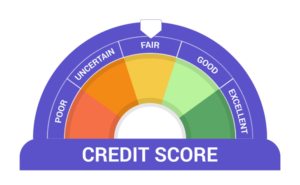How to Remove Tax Lien From Credit Report
Since they involve the government, a tax lien is one of the worst things you can have on your credit record. They have precedence over all other creditors. Without you paying them in full, it’s virtually hard for the government to forgive them.
A government lien against your private possessions for failing to pay a tax bill is a serious problem that might have catastrophic consequences if not addressed swiftly.
Fortunately, you have options for resolving the issue. You can have federal income tax liens removed from your credit reports by paying off your tax obligation, sending a withdrawal form to the Internal Revenue Service, and waiting for the IRS to reply.
However, before settling the tax liens in full, it may be feasible to get the record of the tax lien removed. Hence, we will look into how to remove tax lien from credit report.
What Are Tax Liens?
When you overlook or fail to pay a tax bill, the government can file a legal claim against your property, including real estate and financial assets. If you owe past taxes or have an outstanding tax debt, this may apply to you.
When you fail to pay your taxes as a person or a corporation, the IRS (or state government) assesses your tax debt and issues you a bill or demand for payment. If you don’t pay the payment, the IRS will send you at least one more warning, and during that time, interest will accumulate on your debt.
The IRS collection procedure will then commence. If you do not pay your taxes, the government will file a notice of federal tax liens on your personal property and assets to guarantee that you do.
Once you’ve received a letter of federal tax, you have till the designated date to either pay the entire sum of the taxes you owe or set up a payment plan. The tax can be removed once the payment plan is in place.
How to Remove Tax Lien From Credit Report
When the IRS sends you a notification of a tax lien, there are three procedures you may take to get it removed from your credit reports:
- Set up a payment plan or pay off your tax bill.
- Fill out a form to release a tax.
- Wait for the IRS to respond.
1. Setting Up Payment Plan
Once the IRS has issued you a notice of federal tax, it is in your best interests to notify the agency that you intend to pay the tax obligation in full or through a payment plan, such as Fresh Start.
The Fresh Start program was established to allow taxpayers to work toward having their tax liens removed. Before the IRS files a notice for a Federal Tax Lien, the amount that taxpayers can owe has been increased to $10,000. (Hiring a tax attorney may be useful if you owe more than $10,000.)
After your obligation is paid in full, the IRS will remove your tax lien (a lien release) within 30 days. Alternatively, you can apply to have your tax lien notice removed from your credit report once you’ve established a payment plan, such as through the Fresh Start Initiative.
2. Tax Lien Withdrawal Form
You can ask to remove your federal tax lien notice by filling out the relevant form with your personal information once you’ve set up a payment plan with the IRS to pay off the taxes you owe. You must complete IRS Form 12277 and send it to the IRS through certified mail.
The withdrawal procedure will help you eliminate the tax liens notification from your credit reports, even if you’re still paying back the taxes (for example, through a payment plan). You will, however, be responsible for the outstanding balance.
Your tax liens will be removed from your files after 30 days if you agree with the IRS to pay off your income tax obligation through a payment plan (like Fresh Start) and submit the paperwork to the IRS.
Taking this step is critical since a tax liens on your credit report may negatively affect your credit history and credit score, resulting in higher interest rates and limiting your ability to qualify for favorable loan conditions, get credit cards, or acquire real estate.
It is also very crucial to know the difference between a withdrawal application and a certificate of subordination. Subordination does not erase a lien; rather, it permits other creditors’ claims to take precedence over the IRS’s. This might make getting a loan or a mortgage easier.
3. Await IRS Response
The IRS will contact the court where the lien was initially filed to begin the process of removing it once you file a withdrawal request. This procedure usually takes 30 to 45 days to complete.
The IRS will send you a 10916(c) form after your tax liens removal has been approved. You will receive this paperwork when the tax liens has been formally removed from your credit reports.
Importance Of Tax Lien Removal
It’s good to focus on getting a tax liens removed from your credit record. A lien problem might affect your prospects of acquiring a mortgage or a loan, and it can potentially worsen.
Having a lien on your report, the government may observe that you haven’t made an effort to pay your taxes and file a tax levy claim, allowing the IRS to seize your property and assets.
Since tax liens are public records under state law, having one on your credit might affect your chances of buying a home, taking out loans, receiving credit cards, and so on. Refinancing will also be unavailable. You won’t be able to refinance your mortgage until you’ve paid all of your outstanding taxes.
Furthermore, even if you file for bankruptcy, your tax obligation or lien may continue to occur after that.
There are several contributing factors to paying off your IRS tax debt. Fortunately, there are things you may do to remove the tax liens from credit reports.






